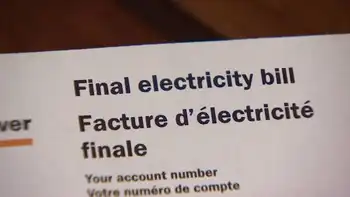Questions surround China dam project
By New York Times
CSA Z463 Electrical Maintenance -
Our customized live online or in‑person group training can be delivered to your staff at your location.

- Live Online
- 6 hours Instructor-led
- Group Training Available
The fatal incident comes as Chinese officials are facing growing questions about the dam project, which has been dogged for years by controversy and discord. Water pollution, soil erosion and landslides are becoming recurrent issues as rising water continues to inundate more land in the reservoir behind the mammoth dam.
State-run news outlets announced a host of new environmental measures from the Three Gorges Project Committee of the State Council, the highest executive body in the Chinese government. Specifics were scarce, but the announcements described “seven projects” focused on guaranteeing safe drinking water, curbing municipal and industrial dumping and instituting an environmental monitoring system.
The proposal appears to be the same basic plan that was discussed privately in late September by select officials and experts at a closed forum about the dam. At that meeting, Wang Xiaofeng, director of the Three Gorges Project Committee, described seven environmental pilot projects that would constitute a “seven plus one” plan to “create a model for a friendly society and environment where man and nature coexist harmoniously.”
But according to a transcript of his September speech obtained by The New York Times, Mr. Wang also suggested that financing for any new environmental initiatives had not yet been approved. “My office is making an effort to push ahead with a ‘seven plus one’ special plan,” Mr. Wang said, adding that he hoped the State Council and regional government “will support it.”
In September, Mr. Wang also said that future environmental protection efforts in the Three Gorges region must focus on curbing industrial and municipal pollution into tributaries and bays of the reservoir behind the dam. Those discharges have caused algal blooms that have contaminated drinking water in certain areas, Mr. Wang said.
Other high priorities included improved efforts at water and sewage treatment; creating ecological buffer zones along the shoreline of the reservoir; and improving treatment and monitoring of geological problems such as landslides in the steep mountains above the reservoir. He said treating geological hazards was vital “to ensure the lives and property of the people in the reservoir region.”
The account from Xinhua, the official news agency, listed many of the same priorities, if with fewer details, but also cast the broader environmental situation in a more measured tone. Mr. Wang was described as saying that the dam’s environmental impact “has been less damaging than feared.”
Xinhua also stated that the current environmental issues were consistent with — or, in some cases, less severe than — predictions made in a 1991 government feasibility report about the project. Xinhua said a new official environmental assessment of the project found “positive impacts of the gigantic dam should on the whole outweigh the negatives.” That new report also said benefits such as flood prevention and power generation would not be impaired.
For years, critics have warned that the dam project would cause environmental problems like water pollution, soil erosion, geological instability and sedimentation. Chinese officials, in turn, mostly brushed aside the criticisms and usually refrained from publicly voicing any concerns about the dam project.
But after the September forum, Xinhua carried a startling account that quoted officials and experts warning of a future “catastrophe” if environmental problems were not addressed. The public airing of the controversy stunned many critics, who claimed vindication. The dam, the largest in the world, was completed last year, though the hydropower complex connected with it will not be entirely finished until 2009.
Now, Chinese officials are emphasizing that the environmental concerns are manageable, and have scheduled a news conference to discuss the situation at the Three Gorges.
Meanwhile, another landslide in the region served as a reminder of the spate of environmental problems. Xinhua reported that the slide happened in Badong County, a sloped region along the shoreline of the reservoir. A cascade of rocks and mud smashed into a construction crew working on a rail tunnel near the reservoir. The landslide crushed the four workers. No information was provided about the two men still trapped under the rubble.











